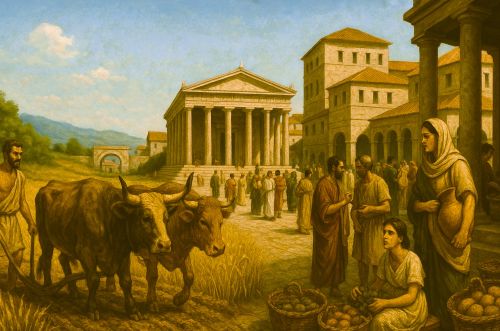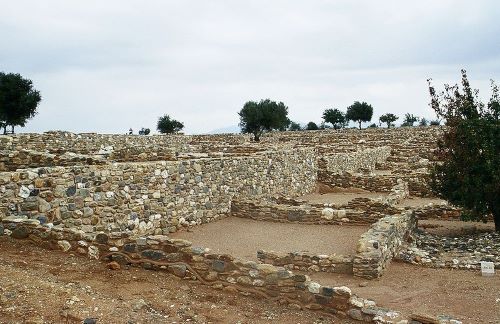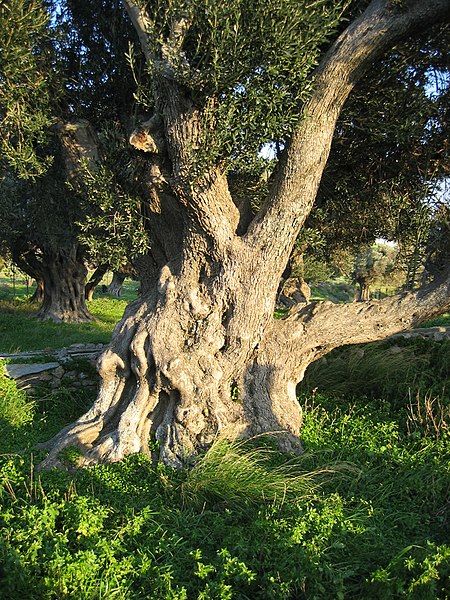

Reconstructing the cost of living in ancient Greece and Rome requires integrating evidence that is scattered across literary texts, inscriptions, papyri, and archaeological remains.

By Matthew A. McIntosh
Public Historian
Brewminate
Introduction
Reconstructing the cost of living in ancient Greece and Rome demands careful navigation of evidence that is both uneven and deeply contextual. Surviving materials range from literary references to grain and wages in authors such as Xenophon and Aristophanes to the more systematic price ceilings preserved in the surviving fragments of Diocletian’s Edict on Maximum Prices.1 These sources do not form a unified dataset, yet together they allow historians to approximate the financial pressures experienced by households across the rural and urban landscapes of the classical Mediterranean. The work of modern scholars has demonstrated that meaningful patterns emerge only when these disparate materials are read alongside archaeological remains, inscriptions, and documentary papyri from Egypt.2
Across these societies, the cost of subsistence was shaped above all by geography, labor systems, and the availability of markets. Rural communities in both Greece and Rome relied heavily on household production, a fact reflected in treatises such as Hesiod’s Works and Days and Cato the Elder’s On Agriculture.3 Such texts reveal a world in which grain harvests, stored produce, and seasonal labor defined the limits of economic survival. Urban centers, by contrast, required greater dependence on purchased goods. Evidence from Athenian wage inscriptions, Roman papyri from Oxyrhynchus, and architectural studies of housing density in cities such as Rome and Alexandria show that urban residents confronted higher and more volatile prices for food, fuel, and rent.4
Even within cities, costs fell unevenly across social groups. Free laborers, enslaved workers, women, and migrants experienced vastly different levels of access to wages, patronage, and public distributions. Modern historians have emphasized that this variation was not noise in the evidence but a central feature of ancient economic life.5 Understanding the cost of living in these societies therefore requires disentangling the structural forces that shaped daily expenses rather than treating the ancient economy as a single undifferentiated system.
What follows examines the cost of living in both ancient Greece and Rome through a comparative and evidence based framework. It draws on verifiable primary sources that document prices, wages, and household provisioning as well as modern scholarship that interprets these materials through demographic and economic analysis. Rural and urban settings are treated separately in order to highlight the distinct pressures facing agricultural households and city dwellers. By approaching the subject through integrated literary, documentary, and archaeological evidence, the study seeks to reconstruct how ordinary people in the ancient Mediterranean navigated the material demands of survival across diverse landscapes and centuries.6
Sources and Methods for Reconstructing Cost of Living

Reconstructing the cost of living in ancient Greece and Rome requires a methodology that foregrounds the fragmentary nature of the surviving evidence. No single category of source preserves a comprehensive economic record, and each carries interpretive limitations. Literary texts provide episodic references to prices and wages, often shaped by rhetorical aims rather than empirical accuracy. Inscriptions, particularly those documenting public pay scales or market regulations, offer more concrete information but survive unevenly across regions and periods. Documentary papyri preserve the most detailed records of everyday transactions, though these materials largely reflect conditions in Egypt rather than the broader Mediterranean world.7
Archaeological evidence provides an essential counterweight to the textual corpus. Excavated houses, storage facilities, workshops, and market spaces reveal patterns of consumption, household provisioning, and the infrastructure of exchange. Studies of faunal and botanical remains help illuminate staples in local diets, allowing historians to assess the quantity and quality of foods accessible to different social groups. These data do not always translate directly into monetary terms, yet they help contextualize textual references to grain prices, rents, and wages by grounding them in physical evidence of production and consumption.8
Modern scholarship has therefore emphasized the importance of triangulating these different bodies of evidence rather than privileging a single category. Economic historians such as Moses Finley argued that ancient economies operated within fundamentally different mental and structural frameworks than modern ones, a view later revised through quantitative analyses by scholars like Walter Scheidel and Geoffrey Kron. Their work integrates demographic modeling, comparative price series, and archaeological datasets to estimate the purchasing power of wages and household expenditures.9 This approach allows for more precise comparisons between rural and urban living costs since it places textual references within a broader economic landscape instead of treating them in isolation.
The methodological challenge remains one of scale and specificity. Regional variations in climate, agricultural productivity, urban density, and labor demand make it difficult to speak of a single Greek or Roman cost of living. Any reconstruction must therefore treat local conditions as central rather than peripheral. By combining literary testimony, inscriptions, papyri, and archaeological evidence, historians can approach a more complete understanding of how households navigated the pressures of subsistence across a diverse Mediterranean world.10
Cost of Living in Classical Greece: Rural Economies

Rural communities in classical Greece relied on agricultural production for most daily needs, and this reliance shaped both the structure and limits of household expenses. The surviving literary sources describe a world where grain harvests, storage capacity, and seasonal labor determined whether a family could meet basic subsistence requirements in any given year. Hesiod’s Works and Days offers a rare glimpse into the precariousness of smallholding life, emphasizing the need for careful planning, sufficient seed grain, and the management of unpredictable harvest cycles.11 Although such texts are not economic manuals, they highlight the centrality of household production rather than cash expenditure in rural settings.
Archaeological evidence supports this picture by revealing small-scale farmsteads dispersed across Attica, Boeotia, and the Peloponnese. These sites show limited storage space, simple architecture, and a reliance on mixed agriculture that combined cereals, olives, vines, and small livestock. The material remains from many of these farms, including grinding stones, press installations, and ceramic storage vessels, suggest that while households produced much of their own food, they still required periodic purchases of items such as tools, iron fittings, and supplementary grain during poor harvest years.12 These occasional market interactions indicate that rural budgets, though small, were not entirely disconnected from monetized exchange.
Rural labor costs formed another important component of the economic landscape. The need for additional hands during harvest and pressing seasons meant that even largely self-sufficient households sometimes hired laborers. Wage rates for agricultural workers appear in scattered inscriptions from rural demes in Attica, reflecting payments that varied by season and task.13 Although these inscriptions are unevenly distributed, they allow historians to compare rural wages with urban pay scales and to observe that agricultural labor tended to be lower paid than skilled work in cities. This disparity affected purchasing power and shaped the ability of rural families to acquire commercial goods.
Land tenure also influenced rural living costs. Some households owned their land outright, while others relied on tenancy agreements that required fixed payments in produce or cash. The epigraphic record preserves several lease contracts that specify annual rents, expected maintenance, and obligations concerning trees or buildings on the property. These contracts show that rural living expenses could extend beyond simple subsistence needs and that tenancy imposed significant demands on household resources.14 For many families, the combination of rent, labor shortages, and inconsistent harvests produced chronic financial vulnerability.
Despite these pressures, rural households benefited from lower overall living costs than their urban counterparts. Most food was home produced, fuel was gathered locally, and housing did not require high monetary outlays. Yet this lower cost of living did not guarantee stability. Climate variability, disease, and the limits of storage technology meant that rural survival remained precarious even in prosperous regions. When taken together, the literary, archaeological, and epigraphic evidence reveals a rural Greek economy defined by self-sufficiency tempered by structural fragility and periodic dependence on local markets.15
Cost of Living in Classical Greece: Urban Economies (Athens)

Urban life in classical Athens created a cost structure fundamentally different from the rural world. The density of the city, the presence of markets, and the specialization of labor all contributed to a living environment where monetary exchange dominated daily survival. Literary sources such as Aristophanes reveal frequent references to the prices of bread, fish, wine, and basic staples, often framed through comedy but still reflecting recognizable market realities.16 These references, combined with archaeological evidence from the Agora and Kerameikos, allow historians to trace how urban households navigated a wide range of expenses for food, housing, and fuel.
Housing costs form one of the clearest contrasts between rural and urban living. Excavations in the Athenian Kerameikos and the Piraeus show clusters of modest apartments and small houses that would have required regular rent payments for residents without property. Although direct rent figures are scarce for classical Athens, later comparative evidence from Hellenistic inscriptions and Roman urban centers suggests that rent consumed a significant share of an urban laborer’s income.17 The archaeological remains of cramped living spaces, minimal storage, and shared courtyards contribute to the understanding that many Athenian residents occupied small rented dwellings rather than owning homes outright.
Wages in the city displayed greater variation than in rural areas, reflecting the wide range of specialized trades available in an urban environment. Inscriptions documenting public works projects record payments to masons, carpenters, sculptors, and other skilled laborers. These inscriptions, many of which survive from the Athenian Agora, indicate wages significantly higher than those available to agricultural workers.18 Higher pay, however, did not always translate into greater economic stability, since urban workers faced higher prices for food, rent, fuel, and manufactured goods. The relationship between wages and the cost of living therefore depended heavily on occupation and skill.
Urban food costs were shaped by the extent of market dependence. Unlike rural households that produced much of their own grain and oil, urban residents purchased nearly all of their staples. Fish, a common food in classical Athens, appears repeatedly in the plays of Aristophanes, where its fluctuating price is a source of satire. Combined with epigraphic evidence for grain shipments and market regulation, these references demonstrate that the urban diet depended on long-distance trade and was vulnerable to disruptions.19 The need to purchase daily food increased the financial pressure on households, particularly during periods of shortage.
Fuel and ancillary expenses also contributed to the higher cost of urban living. Households relied on wood and charcoal for cooking and heating, both of which had to be purchased in the city. Studies of refuse deposits and hearth installations indicate that fuel consumption was a significant recurring cost for urban families.20 When taken together, the evidence suggests that Athens offered greater economic opportunity than rural demes but demanded higher and more consistent expenditures. Urban households lived at the intersection of wage labor, market reliance, and fluctuating prices, creating an economic environment that required careful financial management.
Cost of Living in the Roman World: Rural Italy and the Provinces

Rural life in the Roman world encompassed a vast range of economic conditions, from small subsistence farms in Italy to large agricultural estates in North Africa and the eastern Mediterranean. Literary treatises such as Cato the Elder’s On Agriculture and Varro’s On Agriculture illuminate the provisioning requirements of these rural households.²¹ These texts describe expected expenditures for tools, livestock, clothing, and food for both enslaved and free laborers. Despite their elite perspective, they provide some of the clearest itemized costs available for rural Italy, revealing the close relationship between household budgets and agricultural cycles.
Archaeological surveys deepen this picture by identifying the layout and production capacities of rural farms across the empire. Excavations in regions such as the Tiber Valley, Apulia, and parts of Gaul show clusters of small farms operating with modest storage capabilities and limited access to local markets.22 In contrast, the villa economies of Campania and North Africa display larger-scale production and infrastructure that allowed for more diversified incomes. These regional contrasts indicate that while many rural households lived near subsistence, others participated in broader commercial networks that shaped their spending on tools, labor, and supplementary food.
Wages and rural labor costs appear most clearly in the papyri from Roman Egypt. These documents include detailed accounts of payments to farm workers, tenant obligations, and grain prices over several centuries.23 The evidence suggests that agricultural labor typically received lower wages than skilled urban occupations, although wages varied by season and task. Because many rural households relied on mixed family labor, monetary wages played a smaller role in their daily expenses than in cities. Nonetheless, when households needed hired help for harvests or construction, these payments represented significant financial commitments.
Tenancy added further burdens for many rural families. Surviving lease contracts from Egypt and occasional inscriptions from the western provinces outline requirements such as fixed grain rents, maintenance responsibilities, and obligations to plant or preserve certain crops.24 These contracts reveal that tenant farmers were often caught between unpredictable yields and fixed payments, making the cost of living in rural areas dependent not only on local market prices but also on legal and contractual obligations. Taxation, particularly in grain-producing provinces, intensified these pressures by requiring deliveries that reduced household reserves.
Despite these constraints, rural living costs were generally lower than those of urban centers. Households in many regions produced their own grain, oil, and wine, reducing the need for regular market purchases. Fuel was gathered from local woodlands, and housing required minimal monetary investment. Yet this apparent advantage hid persistent vulnerability. Crop failures, pests, or changes in taxation could push rural households into debt or dependency on wealthier landowners.25 The rural economy of the Roman world therefore combined structural frugality with significant exposure to environmental and administrative risks, shaping the cost of survival across the empire’s diverse landscapes.
Cost of Living in Roman Urban Centers (Rome, Alexandria, Antioch)

Urban life in the Roman Empire produced some of the highest living costs in the ancient Mediterranean. Large cities such as Rome, Alexandria, and Antioch drew massive populations that depended on imported food, rented housing, and specialized labor markets. The surviving sources reveal a complex interplay between wages, prices, and access to state-supported distributions. The most wide-ranging evidence comes from Diocletian’s Edict on Maximum Prices, which attempted to regulate prices across the empire by setting ceilings on food, clothing, rents, and wages.26 Although the edict reflects conditions of the early fourth century, it provides one of the few comprehensive snapshots of urban cost structures available from antiquity.
Housing costs created substantial pressure on urban households. In Rome, the majority of residents lived in multi-story apartment buildings known as insulae, many of which were poorly constructed and required continuous rent payments for small rooms with limited amenities. Archaeological evidence from Ostia, which preserves comparable urban housing forms, demonstrates large variation in rental quality, with small upper-floor units likely more affordable but still taxing for low-income workers.27 Alexandria and Antioch show similar patterns of dense housing and limited private space. The combination of crowding, structural vulnerability, and regular rent payments forms one of the clearest economic distinctions between urban and rural life across the empire.
Food expenses posed another major burden. Cities depended on long-distance shipments of grain, oil, and wine, and their prices were subject to fluctuations in supply, transport conditions, and administrative oversight. Rome’s annona system, which distributed grain at controlled prices and sometimes for free, reduced costs for eligible citizens but did not eliminate market dependence.28 Documentary papyri from Egypt record prices for staples such as wheat, barley, and oil that often rose when supply chains were disrupted. Urban residents outside the subsidized systems faced higher food costs than those in rural areas because they had no direct access to agricultural production.
Urban wages varied widely by occupation. The Edict on Maximum Prices provides maximum allowable daily wages for trades such as construction, metalwork, textile production, and various service professions. When compared with known prices of food and fuel, these wages reveal that unskilled laborers remained close to subsistence even in major cities.29 Skilled workers earned considerably more, yet their higher wages were often offset by higher rents and the cost of purchasing imported goods. In Alexandria and Antioch, papyrological records show wage structures similar to those of Rome, with skilled labor commanding better rates but still operating within tight economic constraints.
Fuel, clothing, and everyday goods further increased the urban cost of living. Charcoal and firewood had to be purchased in cities and appear frequently in price lists from the Edict. Clothing items such as tunics, cloaks, and footwear also feature in the edict at varying price levels that reflect the diversity of materials and labor required for textile production.30 These recurring expenses, combined with rent and the need to purchase nearly all food, created a cumulative economic weight that shaped the daily experience of urban households. While cities offered opportunities for specialized employment and upward mobility, they also required continuous monetary outlays that rural communities did not face.
Comparative Analysis: Rural versus Urban Costs in Greece and Rome

Comparing the cost of living across rural and urban environments in Greece and Rome reveals structural patterns that persist across regions and centuries. Rural households in both cultures relied heavily on household production of grains, oil, wine, and other staples, which reduced the need for cash expenditures. Urban households, by contrast, depended on market purchases for nearly every essential good. This fundamental distinction shaped the financial pressures that families faced and determined how vulnerable they were to fluctuations in supply and demand.31
In Greece, the contrast is clearest in Attica. Rural demes relied on smallholdings with modest storage capacity, and while occasional market transactions occurred, most household needs were met through direct production. Urban Athens, however, operated through market mechanisms that required constant monetary exchange. Wage inscriptions and literary references show that city dwellers paid higher prices for food and fuel and that their survival depended on daily access to cash income.32 These patterns reflect not only differences in cost but also the distinctive economic structures that sustained rural and urban life.
Rome presents similar but more pronounced contrasts. Rural Italy’s mixed agricultural system allowed many households to sustain themselves without regular reliance on markets, although tenants and small farmers often faced tax burdens or rent obligations that strained their resources. Urban centers such as Rome, Alexandria, and Antioch, by comparison, confronted high rents, imported food costs, and the need to purchase fuel and clothing regularly.33 The archaeological and papyrological evidence indicates that urban households spent significantly more on basic necessities than their rural counterparts.
Wage structures in both cultures further accentuate these divides. Skilled urban workers in Athens and Rome earned higher wages than agricultural laborers, but these wages were offset by higher living costs. In many cases, unskilled urban laborers remained close to subsistence even in cities where opportunities for employment were theoretically greater.34 Rural wages were generally lower, yet the reduced dependence on purchased goods made labor income stretch farther in agricultural environments. This divergence underscores the importance of context when evaluating purchasing power.
Dietary patterns also reveal sharp differences. Rural households consumed a larger proportion of home-produced cereals, legumes, and oil, while urban diets relied more heavily on purchased grain, processed bread, wine, fish, and imported goods. Documentary evidence from papyri demonstrates how grain prices in Alexandria could shift rapidly due to trade disruptions, making the cost of living more volatile for city dwellers.35 Rural households, though not immune to risk, benefited from greater control over their subsistence base and therefore experienced more stable access to calories over time.
Taken together, these comparisons show that rural and urban living costs were not simply reflections of geographic difference but indicators of deeper economic structures. Rural economies functioned through household labor and production, while urban centers operated through commercial exchange and high population density.36 These distinct frameworks shaped the financial realities of ancient life and produced durable patterns of inequality across both Greek and Roman societies.
Socioeconomic Stratification and Cost Burdens

Socioeconomic inequality shaped the cost of living throughout the Greek and Roman worlds, influencing who could absorb expenses associated with food, housing, and labor. Elite households possessed the land, slaves, and patronage networks that allowed them to minimize daily monetary outlays. Lower status free workers, enslaved laborers, and women, however, faced a cost structure that required constant effort simply to meet basic needs. Literary and documentary sources show that economic opportunity was distributed unevenly, and this inequality determined how different groups experienced the pressures of urban and rural life.37
Enslaved people received provisions rather than wages, and the cost of maintaining them appears in agricultural treatises such as Cato’s On Agriculture. These texts list quantities of grain, wine, clothing, and oil allocated annually to enslaved laborers, revealing the minimum economic inputs required to sustain coerced labor.38 The expenses were borne by owners, who folded these provisioning costs into broader agricultural budgets. For free laborers, by contrast, wages often barely covered essential purchases. Wage data from Athenian building inscriptions and papyri from Roman Egypt show that unskilled workers in both cultures operated with narrow financial margins.39 Their economic vulnerability made them more sensitive to fluctuations in prices for grain, fuel, or rent.
Women encountered distinctive economic challenges. In both Greece and Rome, legal and cultural norms limited women’s access to property and constrained their participation in waged labor. Documentary papyri record women working as spinners, weavers, and wet nurses, earning wages that were typically lower than those of men performing comparable tasks.40 These disparities meant that women in urban centers, especially widows and migrants, faced steep living costs with limited earning power. In rural areas, women contributed substantially to household production, but their economic contributions often went unrecorded, complicating efforts to reconstruct their role in managing household expenses.
Migrants and foreigners occupied another precarious position. In Athens, metics paid special taxes and relied on rental housing, which increased their cost of living relative to citizens. In Roman cities, migrants from rural regions or distant provinces often became part of the unskilled labor force, facing high rents and irregular employment.41 Their lack of local networks limited access to patronage or subsidized distributions, increasing their exposure to poverty. These conditions helped create a large class of urban residents who lived close to subsistence despite the apparent economic opportunity offered by major cities.
Elite households operated within a different economic reality. Wealthy Athenians and Romans used land, rents, and enslaved labor to insulate themselves from the daily expenses that constrained lower status groups. Their income derived from agricultural estates, commercial investments, or public contracts, which allowed them to absorb food shortages, market fluctuations, or tax burdens with relative ease.42 Because elites could afford housing, retainers, and imported goods, their standard of living contrasted sharply with that of the urban poor, who bore the brunt of rising prices.
Taken together, the evidence reveals that the cost of living in ancient Greece and Rome cannot be understood apart from socioeconomic status. Wealth shaped access to food, housing, and security, while poverty exposed individuals to market volatility, debt, and dependency.43 Understanding these stratifications clarifies why rural and urban environments affected different groups in sharply divergent ways and highlights the structural inequalities embedded in ancient economic life.
Conclusion
Reconstructing the cost of living in ancient Greece and Rome requires integrating evidence that is scattered across literary texts, inscriptions, papyri, and archaeological remains. Each category of source preserves only fragments of a broader economic landscape, but together they reveal a complex structure of household provisioning, market dependence, and regional variation. The comparative framework used in this study demonstrates that despite differences across centuries and cultures, both societies exhibited durable patterns that shaped daily life for rural and urban residents.44
Rural communities in Greece and Rome experienced lower monetary living costs because they relied heavily on household production of grain, oil, and other staples. Yet this apparent advantage masked persistent fragility. Climate fluctuations, tax burdens, and tenancy obligations placed significant strain on agricultural households. Urban centers, by contrast, offered greater access to wages and commercial goods but imposed higher and more volatile expenses for food, rent, fuel, and clothing. These opposing pressures created distinct economic environments that demanded different strategies for survival.45
Socioeconomic status intensified these divides. Elite households in both cultures possessed the resources to buffer themselves against rising prices or poor harvests, while lower status workers, women, migrants, and enslaved laborers confronted the immediate consequences of market fluctuation and structural inequality. Their experiences show that cost of living cannot be separated from the social hierarchies and legal frameworks that defined access to land, wages, and public support.46 By examining these groups together, the evidence reveals a deeply stratified economic world where vulnerability was shaped as much by status as by geography.
The comparative analysis of Greek and Roman sources underscores the importance of approaching ancient economic history through interdisciplinary evidence. Literary references gain clarity when paired with papyrological accounts, while archaeological findings contextualize wage data and price lists.47 Through this integrated method, the cost of living emerges not as a static measure but as a dynamic feature of daily existence shaped by environment, status, and institutional structures. Understanding these patterns enriches the broader study of ancient societies and highlights the diverse ways households navigated the material demands of life in the classical world.
Appendix
Footnotes
- The Edict of Diocletian: An Economic Survey.
- Finley, The Ancient Economy; Bresson, The Making of the Ancient Greek Economy; Scheidel et al., The Cambridge Economic History of the Greco Roman World.
- Xenophon, Oeconomicus; Hesiod, Works and Days; Cato, De Agricultura.
- IG II²; The Oxyrhynchus Papyri; Wallace-Hadrill, Rome’s Cultural Revolution.
- Scheidel, Bresson, and Kron, comparative demographic analyses.
- Morley, Metropolis and Hinterland.
- The Oxyrhynchus Papyri; The Tebtunis Papyri; IG II²; Athenian Agora epigraphic corpus.
- Greene, The Archaeology of the Roman Economy; Wallace-Hadrill, Rome’s Cultural Revolution.
- Finley, The Ancient Economy; Scheidel et al., The Cambridge Economic History of the Greco Roman World; Kron, “The Distribution of Wealth in Classical Antiquity.”
- Morley, Trade in Classical Antiquity.
- Hesiod, Works and Days.
- Bintliff, The Complete Archaeology of Greece.
- IG II²; Bresson, The Making of the Ancient Greek Economy.
- The Athenian Agora inscriptional publications.
- Osborne, Demos: The Discovery of Classical Attika.
- Aristophanes, Complete Plays.
- Wallace-Hadrill, Houses and Society in the Later Roman Empire; Kerameikos excavation reports.
- IG II² 1672.
- Taylor, Poverty, Wealth and Well-being; Bresson, The Making of the Ancient Greek Economy.
- Greene, The Archaeology of the Roman Economy.
- Cato, De Agricultura; Varro, De Re Rustica.
- Tiber Valley Project; Drinkwater and Elton, The Cambridge Ancient History.
- The Oxyrhynchus Papyri; The Tebtunis Papyri.
- Kehoe, The Economics of Agriculture on Roman Imperial Estates.
- Scheidel, Measuring Sex, Age, and Death in the Roman Empire.
- The Edict of Diocletian: An Economic Survey.
- Adam, Roman Building; Scavi di Ostia.
- Erdkamp, The Grain Market in the Roman Empire.
- Martial, Epigrams; Juvenal, Satires.
- Diocletian’s Edict on Maximum Prices (wage tables).
- Diocletian’s Edict on Maximum Prices (commodity lists).
- Scheidel et al., The Cambridge Economic History of the Greco Roman World.
- IG II²; Bresson, The Making of the Ancient Greek Economy.
- Erdkamp, The Grain Market in the Roman Empire; The Oxyrhynchus Papyri.
- The Oxyrhynchus Papyri.
- Morley, The Ancient Mediterranean Economy.
- Scheidel and Friesen, “The Size of the Economy and the Distribution of Income in the Roman Empire.”
- Cato, De Agricultura.
- IG II² (wage inscriptions).
- Pomeroy, Goddesses, Whores, Wives, and Slaves; The Oxyrhynchus Papyri; The Tebtunis Papyri.
- Trevett, Metics in Athens; Morley, Metropolis and Hinterland.
- Millett, Lending and Borrowing in Ancient Athens; Wallace-Hadrill, studies on Roman social structure.
- Kron, “The Distribution of Wealth in Classical Antiquity.”
- Morley, The Ancient Mediterranean Economy.
- Bresson, The Making of the Ancient Greek Economy; Erdkamp, The Grain Market in the Roman Empire.
- Scheidel and Friesen, “The Size of the Economy and the Distribution of Income in the Roman Empire.”
- Kron, “The Distribution of Wealth in Classical Antiquity.”
Bibliography
- Adam, Jean-Pierre. Roman Building: Materials and Techniques. Rev. ed. London: Routledge, 1984.
- Aristophanes. Complete Plays. Translated and edited in multiple scholarly editions; standard reference: Aristophanes. The Complete Greek Drama, edited by Whitney J. Oates and Eugene O’Neill Jr. New York: Random House, 1938.
- Bintliff, John. The Complete Archaeology of Greece: From Hunter-Gatherers to the 20th Century AD. Hoboken: Wiley-Blackwell, 2012.
- Bresson, Alain. The Making of the Ancient Greek Economy: Institutions, Markets, and Growth in the City-States. Princeton: Princeton University Press, 2015.
- Cato the Elder. De Agricultura. Translated by W. D. Hooper. Loeb Classical Library 283. Cambridge, MA: Harvard University Press, 1934.
- Drinkwater, J. F., and Hugh Elton, eds. The Cambridge Ancient History. Cambridge: Cambridge University Press, 2024.
- Erdkamp, Paul. The Grain Market in the Roman Empire: A Social, Political, and Economic Study. Cambridge: Cambridge University Press, 2005.
- Finley, Moses I. The Ancient Economy. 2nd ed. Berkeley: University of California Press, 1973.
- Greene, Kevin. The Archaeology of the Roman Economy. Berkeley: University of California Press, 1986.
- Hesiod. Works and Days. Standard reference: Hesiod. Works and Days, edited and translated by M. L. West. Oxford: Oxford University Press, 1978.
- IG II² (Inscriptiones Graecae II²). Inscriptiones Graecae II²: Inscriptiones Atticae Euclidis Anno Anteriores. Berlin: De Gruyter, 1913–1940.
- Juvenal. Satires. Translated by Susanna Morton Braund. Loeb Classical Library 91. Cambridge, MA: Harvard University Press, 2004.
- Kehoe, Dennis. The Economics of Agriculture on Roman Imperial Estates in North Africa. Göttingen: Vandenhoeck & Ruprecht, 1988.
- Martial. Epigrams. Translated by D. R. Shackleton Bailey. 3 vols. Loeb Classical Library. Cambridge, MA: Harvard University Press, 1993.
- Millett, Paul. Lending and Borrowing in Ancient Athens. Cambridge: Cambridge University Press, 1991.
- Morley, Neville. Metropolis and Hinterland: The City of Rome and the Italian Economy, 200 BC–AD 200. Cambridge: Cambridge University Press, 1996.
- Morley, Neville. Trade in Classical Antiquity. London: Duckworth, 2007.
- Osborne, Robin. Demos: The Discovery of Classical Attika. Cambridge: Cambridge University Press, 1985.
- Pomeroy, Sarah B. Goddesses, Whores, Wives, and Slaves: Women in Classical Antiquity. New York: Schocken Books, 1975.
- Scheidel, Walter. Measuring Sex, Age, and Death in the Roman Empire: Explorations in Ancient Demography. Ann Arbor: University of Michigan Press, 1996.
- Scheidel, Walter, Ian Morris, and Richard P. Saller, eds. The Cambridge Economic History of the Greco-Roman World. Cambridge: Cambridge University Press, 2007.
- Scheidel, Walter, and Steven J. Friesen. “The Size of the Economy and the Distribution of Income in the Roman Empire.” Journal of Roman Studies 99 (2009): 61–91.
- Scavi di Ostia. Scavi di Ostia. Rome: Libreria dello Stato, 1954–.
- Taylor, Claire. Poverty, Wealth and Well-being: Experiencing Penia in Democratic Athens. London: Bloomsbury, 2021.
- Trevett, Jeremy. Metics in Athens. Princeton: Princeton University Press, 1996.
- Varro. De Re Rustica. Translated by W. D. Hooper and H. B. Ash. Loeb Classical Library 283. Cambridge, MA: Harvard University Press, 1934.
- Wallace-Hadrill, Andrew. Houses and Society in the Later Roman Empire. Princeton: Princeton University Press, 1991.
- Wallace-Hadrill, Andrew. Rome’s Cultural Revolution. Cambridge: Cambridge University Press, 2008.
- Xenophon. Oeconomicus. Edited and translated by Sarah B. Pomeroy. Oxford: Oxford University Press, 1994.
- The Athenian Agora. The Athenian Agora: Results of Excavations Conducted by the American School of Classical Studies at Athens. Princeton: American School of Classical Studies at Athens, 1953–.
- The Edict of Diocletian. The Edict of Diocletian: An Economic Survey. Oxford: Clarendon Press, 1926.
- The Oxyrhynchus Papyri. Edited by Bernard P. Grenfell and Arthur S. Hunt. London: Egypt Exploration Society, 1898–.
- The Tebtunis Papyri. Berkeley: Center for the Tebtunis Papyri, University of California, 1933.
Originally published by Brewminate, 11.18.2025, under the terms of a Creative Commons Attribution-NonCommercial-NoDerivatives 4.0 International license.


